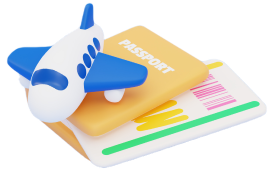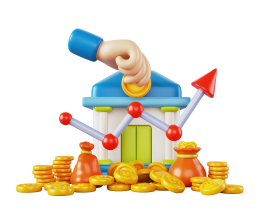-
Visas & Immigration
-
Taxes
-
Cost of Living
-
Companies Hiring
-
Relocation Companies
-
Jobs
-
Salaries
-
Healthcare & Insurance
-
Webinars
Cost of Living in Stockholm

Rebeka Meszaros
Rebeka is a professional content writer who specializes in marketing, business, travel, and expat tips. She enjoys sharing practical, down-to-earth advice, whether it's helping businesses better their marketing strategy or providing insights about living overseas. Rebeka adds a personal touch to her writing, ensuring that every piece connects with readers.

Oleksandra Dosii
Oleksandra is a dedicated marketer with a passion for growing HR-tech products. She believes content marketing is about delivering high-quality content that provides value—not just generating leads. Since 2016, Oleksandra has been involved in tech talent relocation.

Start Advertising

Stockholm, the capital of Sweden, is known for its high cost of living compared to many other European cities. For a single person, living costs in Stockholm average around €2,448 per month, while a family of four can expect to spend approximately €6,117 monthly (Source: Numbeo).
Let’s break down the expected cost of living in Stockholm, covering essentials like food, transportation, rent, utilities, and childcare, to help you make informed decisions and manage your budget effectively.
Is Stockholm expensive?
Stockholm is the most expensive city in Sweden and ranks 26th in Europe. For a family of four, the estimated total monthly cost is €6,117, while a single person can expect to pay around €2,448 per month.
When compared to the cost of living in London, where the total monthly cost for a single person is €3,875, Stockholm is about €1,427 cheaper per month. On the other hand, Berlin's total monthly cost for a single person is €2,277, making the monthly cost of living in Stockholm €171 higher than in Berlin.
Rent per month
Here's an overview of the average monthly rent in Stockholm, depending on the apartment's size and location (Source: Numbeo):
- Apartment (1 bedroom) in the city center: €1,431
- Apartment (1 bedroom) outside of center: €882
- Apartment (3 bedrooms) in the city center: €2,444
- Apartment (3 bedrooms) outside of center: €1,625
The Stockholm rental market is slowly bouncing back, with housing prices expected to rise 5-10% by 2025. Interest rates, which affect rent and living costs, are currently at 4% but could drop to 2.5% by the end of the year. While mortgage costs have gone up since the pandemic, these expected rate cuts could ease the pressure, and help with the Stockholm cost of living (Source: Nordea Corporate).
Best areas to live in Stockholm:
- Östermalm – Exclusive, luxurious, high-end living with shops and restaurants.
- Södermalm – Trendy, lively, great for nightlife and young professionals.
- Kungsholmen – Green, quiet, and family-friendly with parks and water views.
- Vasastan – Fashionable, quiet, tech hub, close to parks and restaurants.
- Norrmalm – Central, expensive, convenient for work and shopping districts.
- Djurgården – Scenic, leafy, peaceful, and great for nature lovers near the city.
Up-and-coming neighborhoods:
- Järfälla — Suburban, family-friendly, with lots of green spaces and nature.
- Liljeholmen — Modern, popular with young professionals, well-connected to the city.
- Solna — Affordable, close to the city, with parks and growing amenities.
- Sundbyberg — Fast-growing, affordable, with expanding amenities and green spaces.
Less desirable areas:
- Farsta — Further out from the city, affordable but with fewer amenities and a longer commute.
- Skarpnäck — A suburban area with affordable housing, but limited services and a longer commute.
- Hässelby Strand — Farther from the city center, affordable, with fewer amenities and slower transport.
- Gamla Stan — Touristy, expensive, and with limited housing options, better for short-term stays.
How to find an apartment in Stockholm
Finding a rental in Stockholm can be tough due to high demand and limited availability, but there are ways to make it easier. Start by using trusted platforms like Samtrygg, which offers safe sublets without needing a Swedish personal identity number, and even includes 30 days of home insurance. Another option is Blocket.se, where you'll find a lot of listings, but competition is high, and scams can happen — so never pay upfront without seeing the place. If the listings are in Swedish, use Google Chrome’s "Translate to English" feature to make sure you understand everything. For short-term stays, consider co-living spaces like Allihoop and Colive, which are popular with newcomers and offer furnished spaces, and utilities are mostly included.
One key tip for Stockholm is to sign up for a Bostadskö (housing queue) as soon as possible, as it can take years to get a first-hand rental contract. While you wait, second-hand rentals are more common, but always confirm the landlord’s consent to avoid any issues. Check out BostadDirekt for listings, though you’ll need to pay for contact details. Don’t forget to join Facebook groups like Rooms/Housing Stockholm for more options — just be cautious of scams and always visit a property before making any payments. Rent is a big part of your Stockholm cost of living, so make sure to invest enough time into finding the right place.
If you need support during your housing search in Stockholm, we're here to assist. We can provide a quote or connect you with our trusted partners who have helped many of our users find housing throughout the city.
Property prices
The average price per square meter to buy an apartment in Stockholm is around (Source: Numbeo):
- City center: €9,346/sqm
- Outside of the city center: €5,008/sqm
Buying property in Stockholm as a foreigner is straightforward, with no legal restrictions, but you must be prepared for high demand and competition (Source: CurrencyFair). Whether you're an EU/EEA citizen or not, you can buy property, but non-EU citizens need to apply for residency if staying over 90 days. Mortgages are available to foreigners, though you’ll need proof of employment, a residency permit, and a Swedish ID card. Keep in mind that you can only borrow up to 85% of the property’s value, so you’ll need a 15% down payment. The property market in Stockholm is competitive, so expect quick bidding and to close within 14 days if successful. Agents handle most of the process, so no need for a lawyer. You can explore property listings on Hemnet or Booli to better understand the market.
When it comes to costs, stamp duty is 4.25% of the property value, and capital gains tax is set at 30%. While property prices can be high in Stockholm, there’s no inheritance tax, which can ease long-term planning. Moreover, make sure to factor in costs like inspections and potential currency exchange fees when transferring funds for deposits or purchases. Lantmäteriet is where property ownership is officially recorded, and for tax-related information, visit Skatteverket. If you’re looking for mortgage services, Nordea provides information and support for international buyers.
Utilities
A big part of your Stockholm cost of living is the monthly utilities (Source: Numbeo):
- Basic utilities (electricity, heating, cooling, water, garbage) for 85m² apartment: €164
- Mobile phone monthly plan with calls and 10GB+ Data: €23
- Internet (60 Mbps or more, unlimited data, cable/ADSL): €27
These costs can accumulate significantly over the year. However, you can cut down on them by following these tips:
- Compare providers: Use tools like PriceRunner or Compricer to compare electricity, mobile, and internet providers. For mobile, check Tele2, Comviq, and Hallon for affordable plans.
- Bundle services: Providers like Telenor and Telia offer discounts for bundling mobile, internet, and TV services.
- Choose energy-efficient appliances: Opt for energy-efficient models when upgrading appliances. Check energy ratings (A-G) to lower long-term electricity usage.
- Use a prepaid mobile plan: For low-data users, prepaid plans from Comviq or Halebop offer cost-effective alternatives.
- Opt for variable electricity rates: Consider a variable rate contract to save on electricity costs by using power during off-peak hours. Compare offers on Elskling.
Public transport
The easiest way to get around Stockholm is by using public transport from SL, including the metro, buses, commuter trains, and ferries. You can buy an SL Access Card or use the SL app for one-way tickets or passes, like 24-hour or monthly options. Children under 7 travel free, and the reduced prices apply to those under 20, over 65, and certain students. The metro is great for getting around the city, while buses and ferries cover the outer areas. If you are a frequent traveler, consider getting an annual pass as it really helps with the cost of living in Stockholm.
Stockholm travel ticket (Source: SL):
One-way ticket (Enkelbiljett): €3.95 (Reduced price: €2.70)
(Valid for 75 minutes of unlimited travel across buses, metros, and trains.)
- 24-hour ticket: €11.40 (or €7.90)
- 72-hour ticket: €22.80 (or €14.90)
- 7-day ticket: €29.40 (or €19.80)
- 30-day ticket: €78 (or €52)
- Annual pass: €818 (or €548)
Taxi (Source: Numbeo):
- Taxi start (normal tariff): €5.90
- Taxi 1 km: €2.60
- Taxi 1 hour waiting: €50
- From the Airport to the city center: €47
Food
Shopping in Stockholm can be affordable if you know where to go. For budget-friendly options, head to Lidl or Willy, which offer a wide range of products at lower prices. The Lidl app can help you save even more with personal discounts. Larger stores like ICA Maxi are also good options for lower prices and a broader selection, compared to smaller stores like ICA Nära. If you're looking to cut costs on fruits and vegetables, opt for frozen varieties — they are usually way cheaper than fresh vegetables. Don't forget to bring reusable bags to avoid extra charges for plastic ones.
Depending on personal dietary and shopping habits, expect to spend the following amount per month in Stockholm (Source: Reddit):
- For a single person: €160-€200
- For a couple: €400-€500
- For a family of four: €800-€1000
Here are a few common grocery items to give you an idea of the prices (Source: Numbeo):
- Milk (1 liter): €1.30
- Loaf of fresh white bread (500g): €2.60
- Rice (1kg): €3.50
- Eggs (12): €3.80
- Chicken fillets (1kg): €10.60
- Domestic beer (0.5 liter draught): €6.70
Childcare
In Sweden, children aged 1-5 can attend public daycare (förskola) or educational care (pedagogisk omsorg). To apply, your child needs a Swedish personal identity number, and you must be registered in the local municipality or planning to live there permanently. Sweden also offers one of the most generous parental leave systems globally, with 480 days of leave per child, 420 of which are paid at 80% of your salary. For more information, you can visit the Swedish National Agency for Education or contact your local municipality.
If you're on parental leave or unemployed, your child is entitled to at least 15 hours per week of daycare. Fees are income-based and capped at the national maximum limit ('maxtaxa') to ensure affordability for all families and help with the cost of living in Stockholm.
The available types of childcare include:
- Public daycare (Förskola): The most common option, open year-round, with some offering evening or night hours depending on the municipality. Prices range between €130 and €176 per month, income-dependent.
- Private preschools: Follow the same curriculum as municipal ones but may have additional fees.
- Educational care (Pedagogisk omsorg): An alternative where children receive care in a caregiver's home or through family-based arrangements. Fees are similar to public daycare, capped by the 'maxtaxa' system (there’s a maximum fee policy).
- Preschool (or kindergarten), full day, private, monthly for 1 child: €135
International yearly school fees (Source: International Schools Database):
- British International School of Stockholm: €10,600-€15,000
- Vasa International School of Stockholm: €878
- Stockholm International School: €10,900-€15,500
- The Tanto International School: €1,160-€4,800
- International primary school, yearly for 1 child: €6,658
Need help finding housing abroad?

Fill out this form

Shoot us an email with your inquiry at [email protected].



















